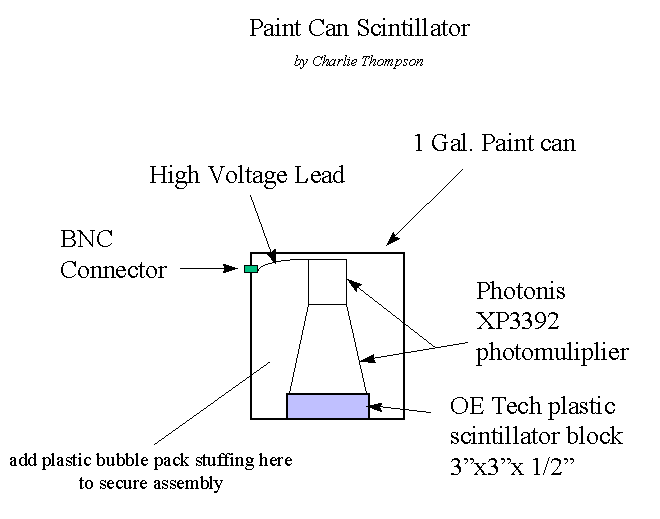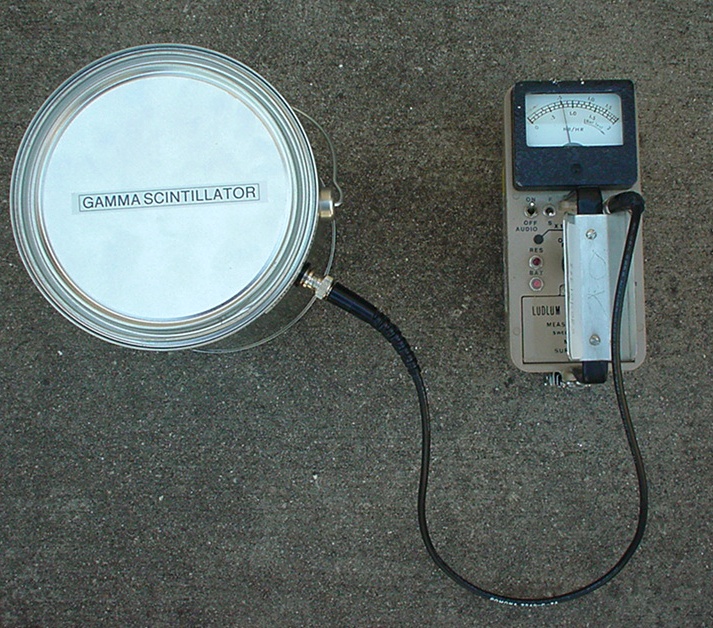|
|
|
Using a surplus photomultiplier with built-in dynode string,
a 3" x 3" piece of plastic scintillator material,
and
a $2.49 empty 1 gallon paint can from Home Depot you
can
build a Ludlum-compatible scintillator capable of measuring
the background radiation of the soil.
Total cost: less than $35!
1. Wrap the plastic scintillator block (available
from www.oetech.com) in a piece of
white paper leaving one face open for mating to the PMT.
Then wrap with aluminum
foil and seal out the light with copious amounts of black
electrical tape.

2. Wire the PMT plate as the "top dynode" in the
reisistor string for a 2-wire probe connection
(see forthcoming schematic for details) and connect to
the center pin of a BNC mounted in the
side of the paint can. BE SURE to add a .01 uF
2kV bypass capacitor between the +800V
and ground (gold) pins on the XP3392. This bypass
cap is REQUIRED for proper operation
but is not shown in my hookup photo of the XP3392.
You can run the XP3392 up to about
1100 volts safely from what I can tell.
3. Stuff the entire light-tight wrapped PMT-scintillator
assembly into the paint can and further
secure with bubble pack until tightly packed for no movement.
Set the unit on a concrete floor
and gently tap the lid on with a hammer.
4. Using a Ludlum 14C or equivalent model adjust the external HV on the unit for approximately 1000V.
5. Attach the Paint Can Scintillator and further
adjust the HV for reasonable background count
and test with a radioactive check disk similar to those
found on 111b scintillators.

Ignore the meter scale in the above photo. The reading
represents
about 7-10 micro-Rems of terrestrial/cosmic background
radiation.
My unit correlates terrestrial/cosmic background readings
well when compared
to a Model 111b scintillator.
It's interesting to note that different parts of my property
show different
radiation levels. Use the "slow" time constant
on your meter for
accurate and repeatable measurements. The variation
is largely due
to thickness variations in our thin topsoil here in Texas.
Solid rock
shows a drop in background levels. (Local rock
is pure calcium carbonate limestone).

if you have questions....email xctx@onr.com (doff the anti-spam x's)